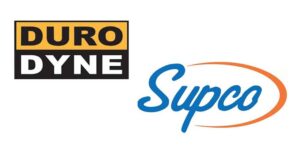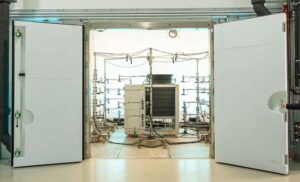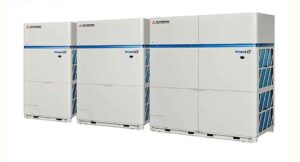Network Rail trials passive cooling system
17th August 2025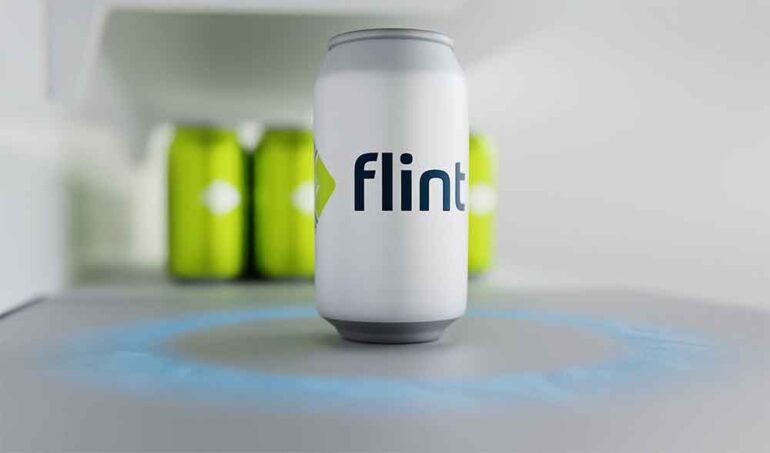
UK: A new passive cooling system, currently being deployed in railway signalling cabinets to combat excessive heat, could improve the efficiency of commercial refrigeration cabinets.
The South Eastern Railway company has partnered with UK green tech start-up Flint Engineering to deploy Flint’s IsoMat system that can deliver peak temperature reductions of over 21% on the hottest days.
Network Rail, which nationally owns and manages 20,000 miles of track and railway infrastructure, has been grappling with a significant operational challenge: excessive internal temperatures in signalling cabinets during hot weather, which can exceed 70°C. This can lead to system failures, resulting in train delays, service disruptions, and substantial maintenance costs, while posing significant risks to overall rail reliability.
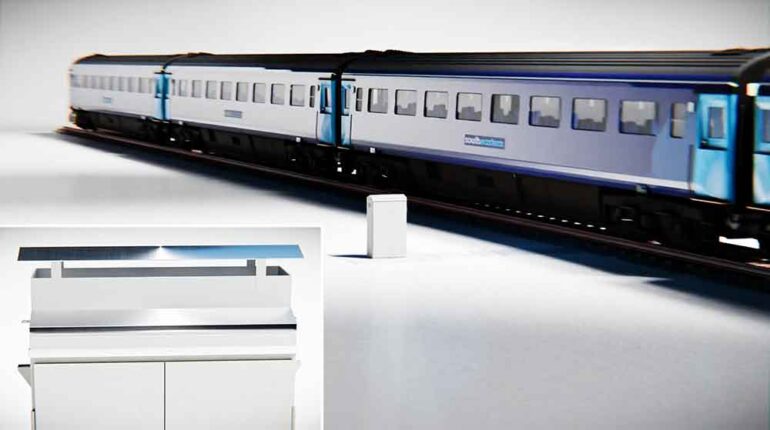
The innovative solution reinvents traditional heat pipe technology through a novel flat aluminium sheet design featuring an internal network of sealed channels. When exposed to extreme temperatures, the liquid within these channels undergoes a rapid cycle of evaporation and condensation, resulting in what the designer claims is a “near-instantaneous” heat transfer.
The collaboration with South Eastern Railway will see the deployment of Flint’s IsoMat technology on 10 of the highest risk cabinet locations on the Tonbridge to Hastings line this summer. Requiring no internal cabinet modifications, the IsoMat simply fits on the top of the cabinet, and can be installed in under an hour.
Following a successful pilot trial, Flint Engineering is now preparing to deliver an increased number of IsoMat units for deployment across more of the route’s highest-risk cabinet locations in time for summer 2026.
Commercial refrigeration
Flint Engineering maintains that the IsoMat technology can be applied to improve product performance in many applications including commercial refrigeration cabinets, EV battery packs, and to satisfy the heating or cooling requirements inside the built environment.
Tests conducted at Brunel University are said to show that using the IsoMat system in refrigeration cabinets can lead to direct energy savings of 8% to 30% and improved temperature consistency.
Commercial refrigeration cabinets typically hold merchandise on steel shelves and rely on cold air circulation to chill food. This method can result in temperature variations and energy waste, with some of the cold air wasted as it spills into the aisles.
The IsoMat Shelf replaces traditional steel shelves and becomes an active part of the cooling process. It cools merchandise directly and, according to Flint Engineering, improves air circulation, resulting in significant energy savings and consistent temperatures throughout the cabinet.
The rear of the shelf is cooled by air flowing through vents in the back panel and due to its isothermal nature, a whole shelf quickly assumes the same temperature. As a result, the shelf directly cools any merchandise placed upon it, and, by conductive cooling, the air coming into contact with the underside of the shelf is further cooled and drops onto merchandise directly below it.
Flint Engineering insists that, because of these new cooling mechanisms, the temperature of the air circulating around the cabinet can be raised by a few degrees. The uniformity of temperature throughout the shelf is improved, and food shelf life may be increased.




